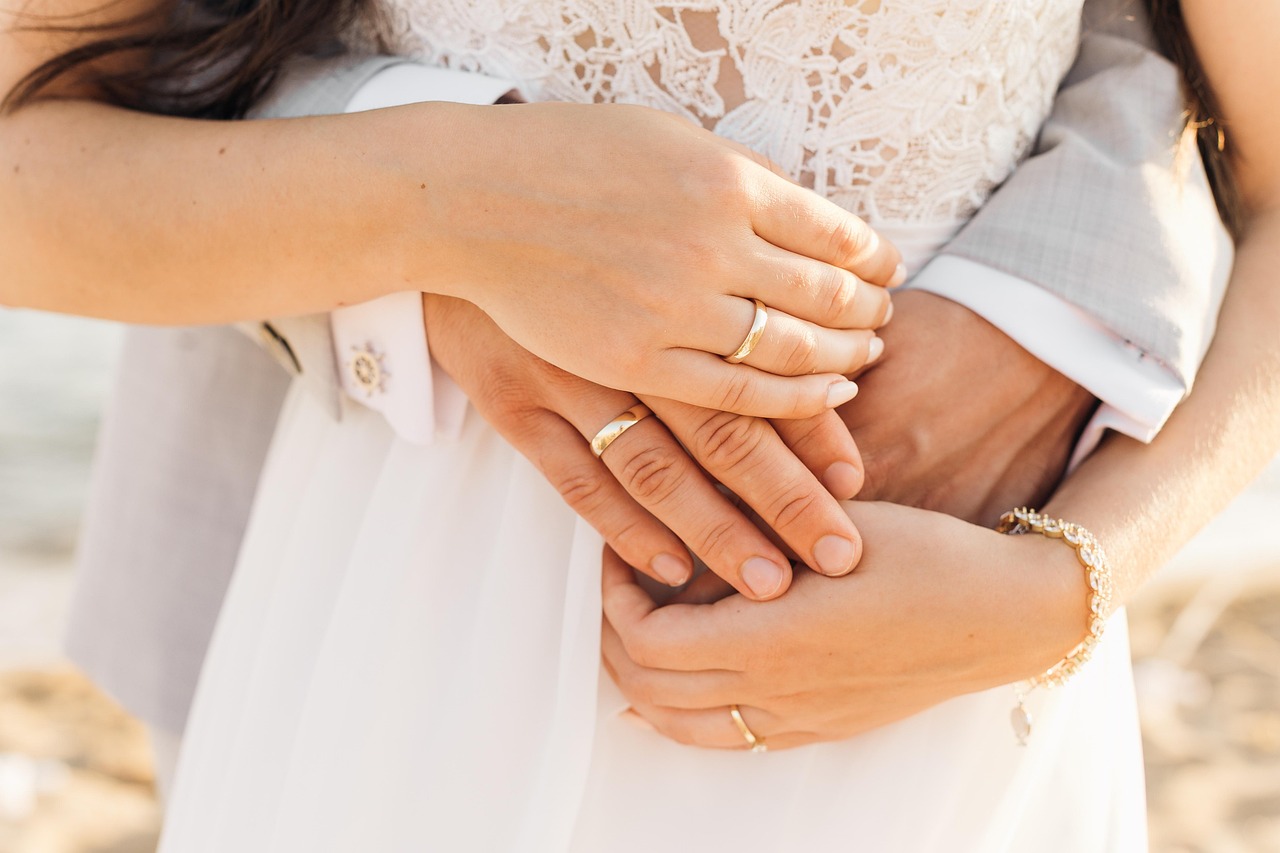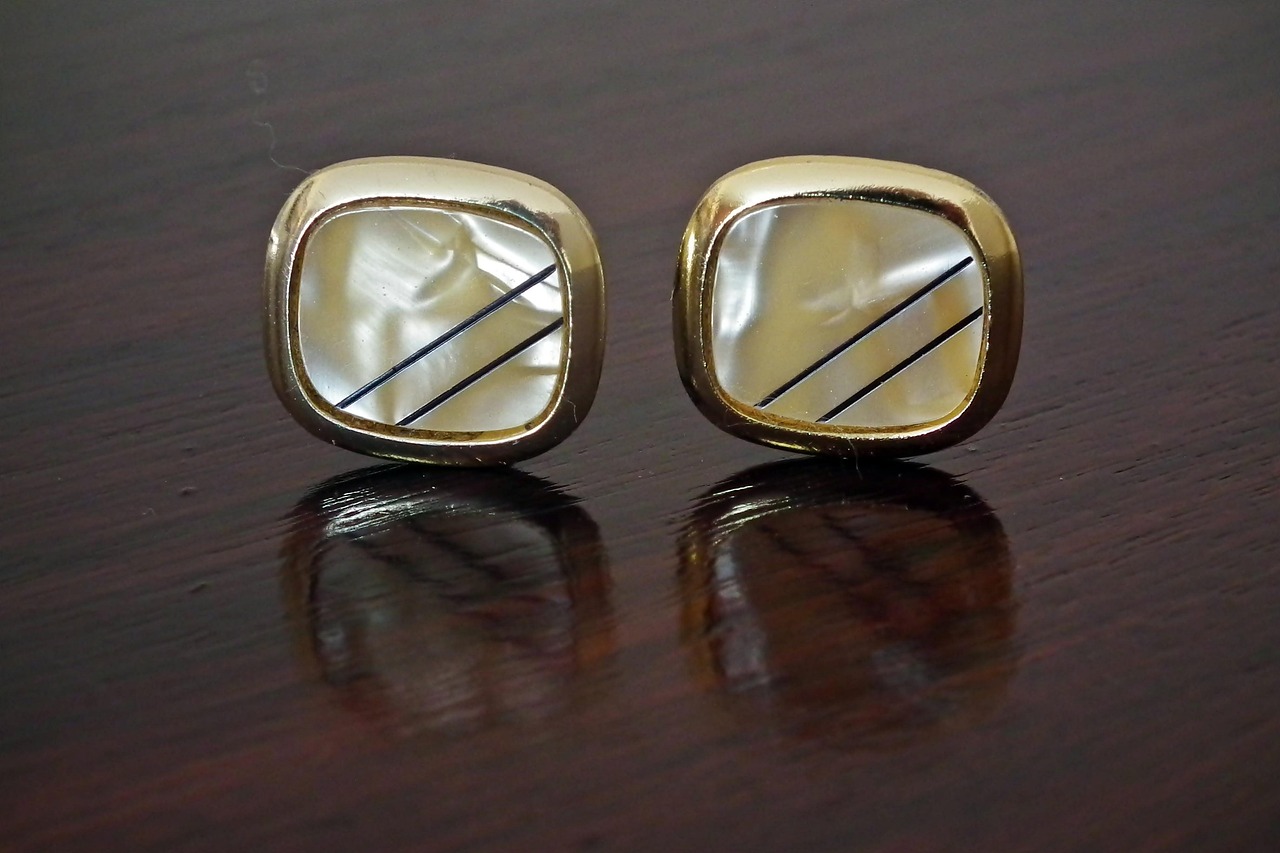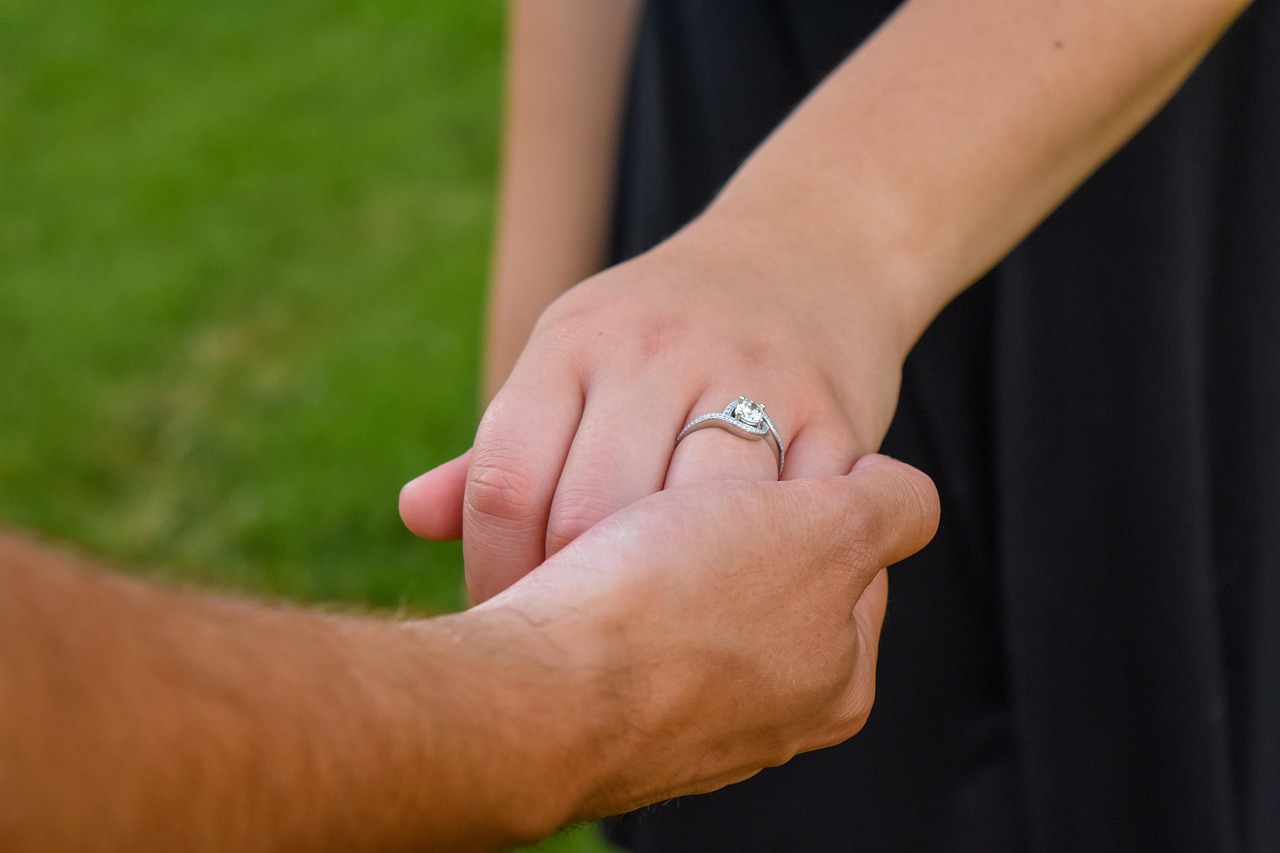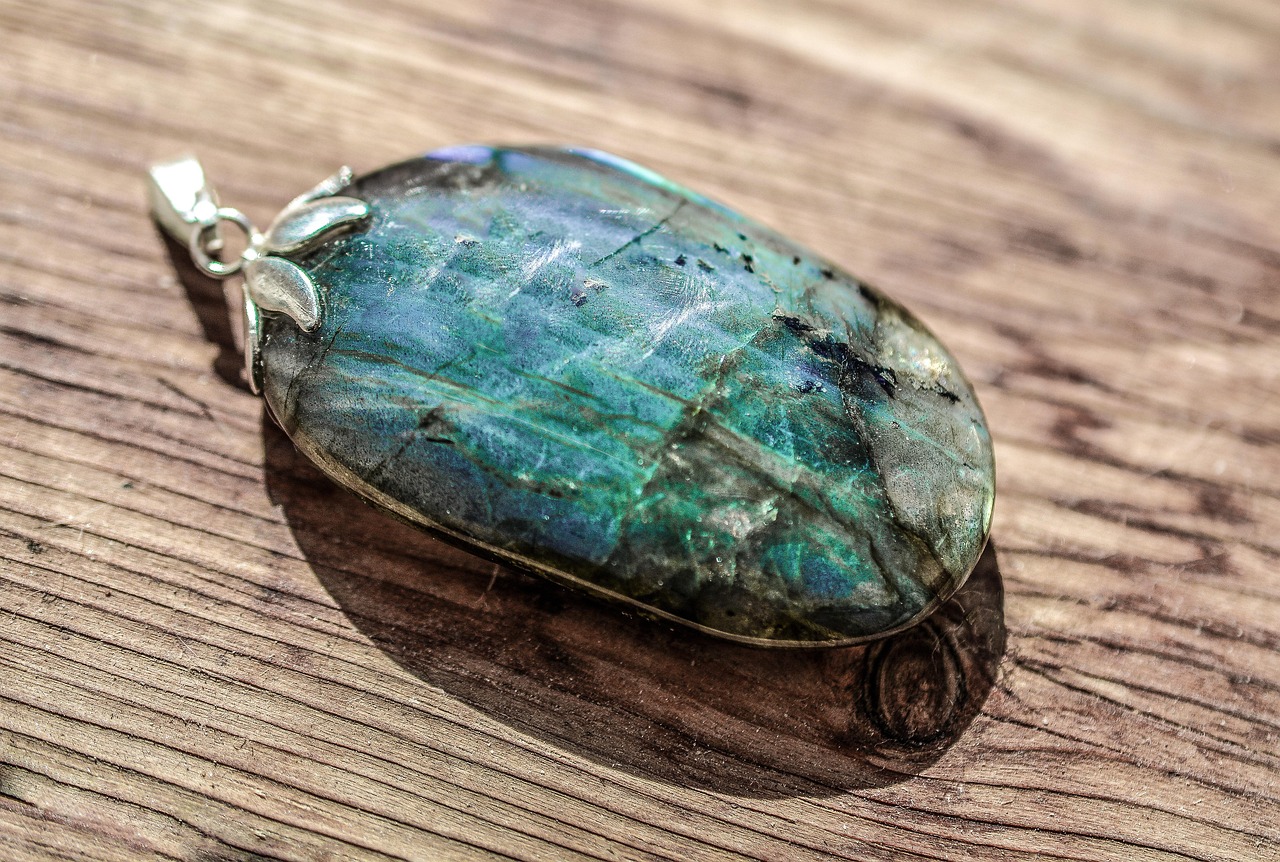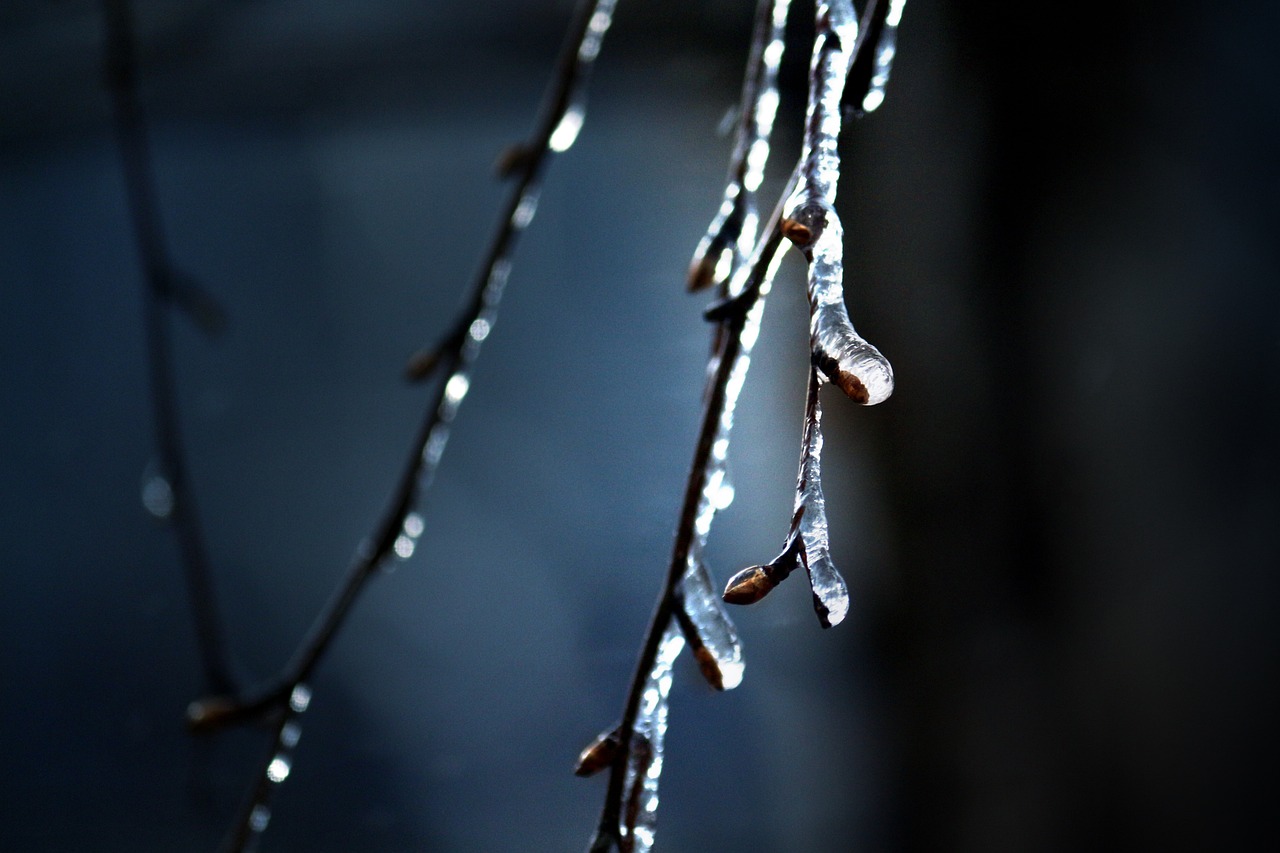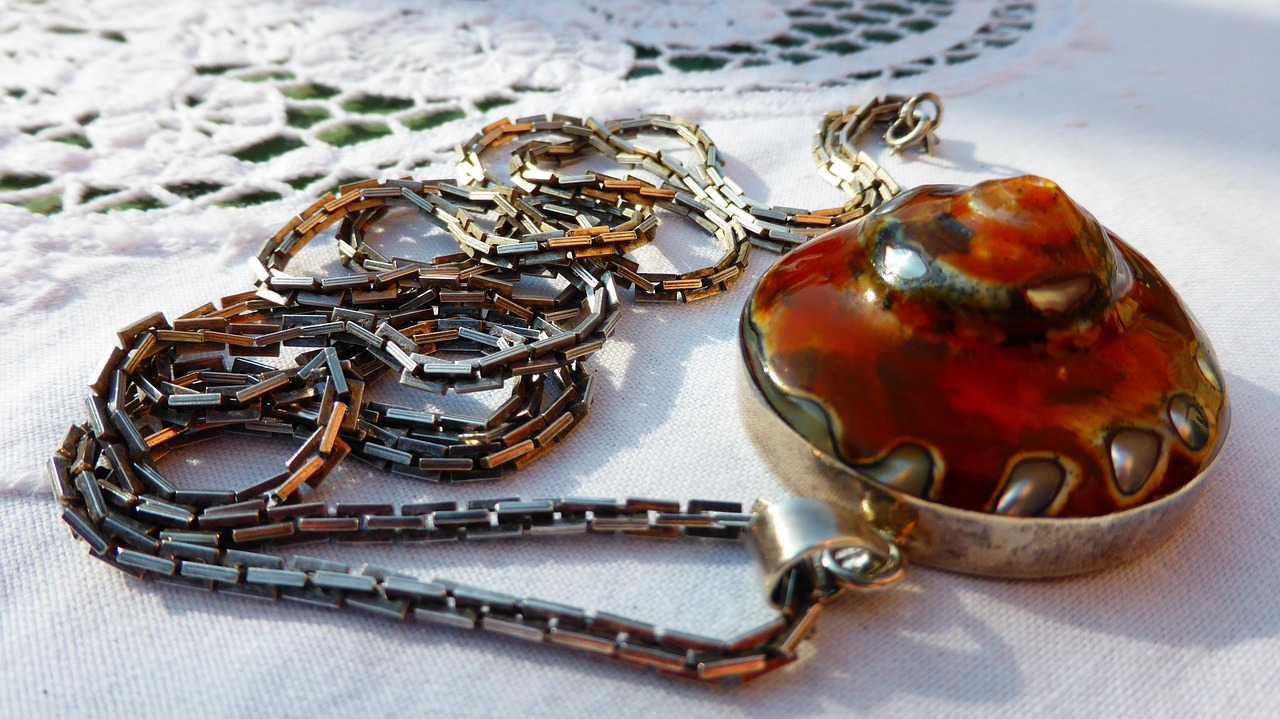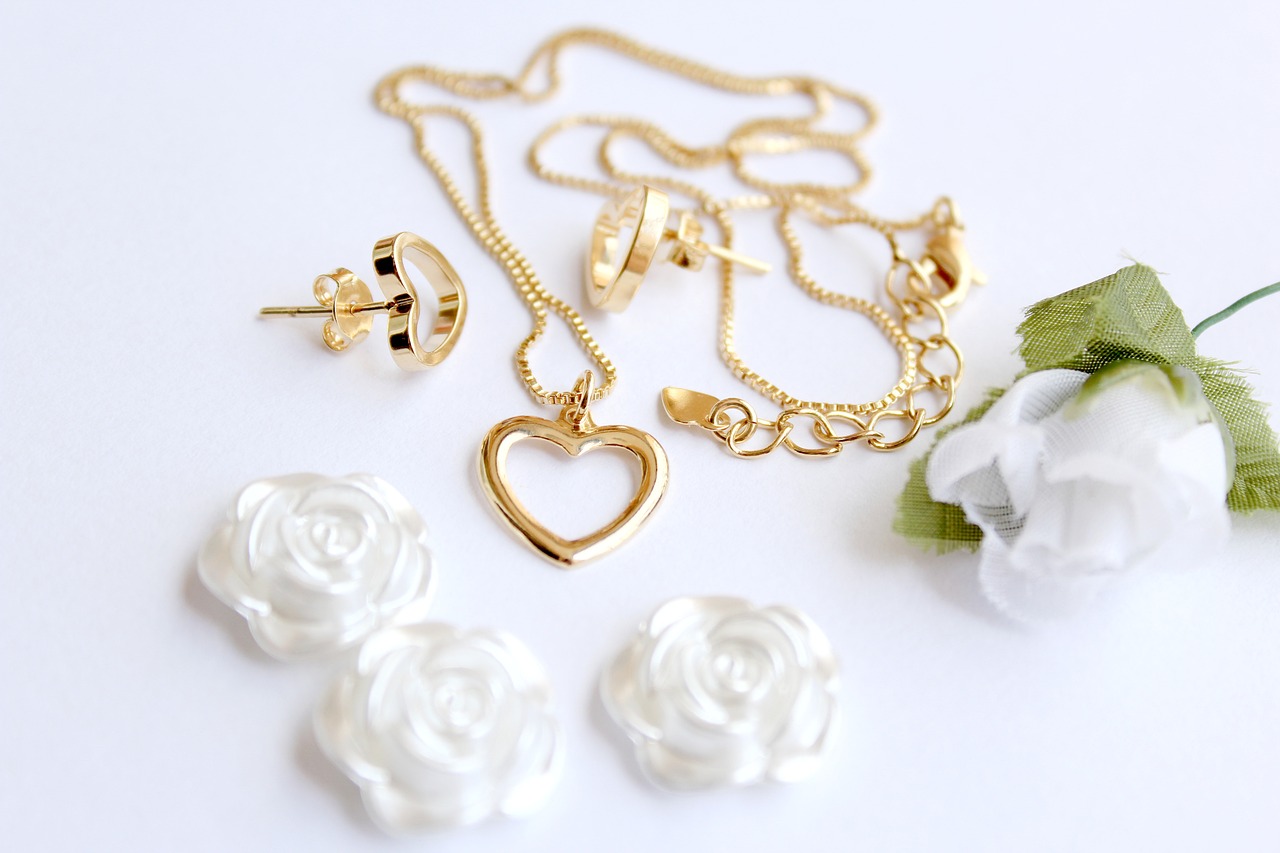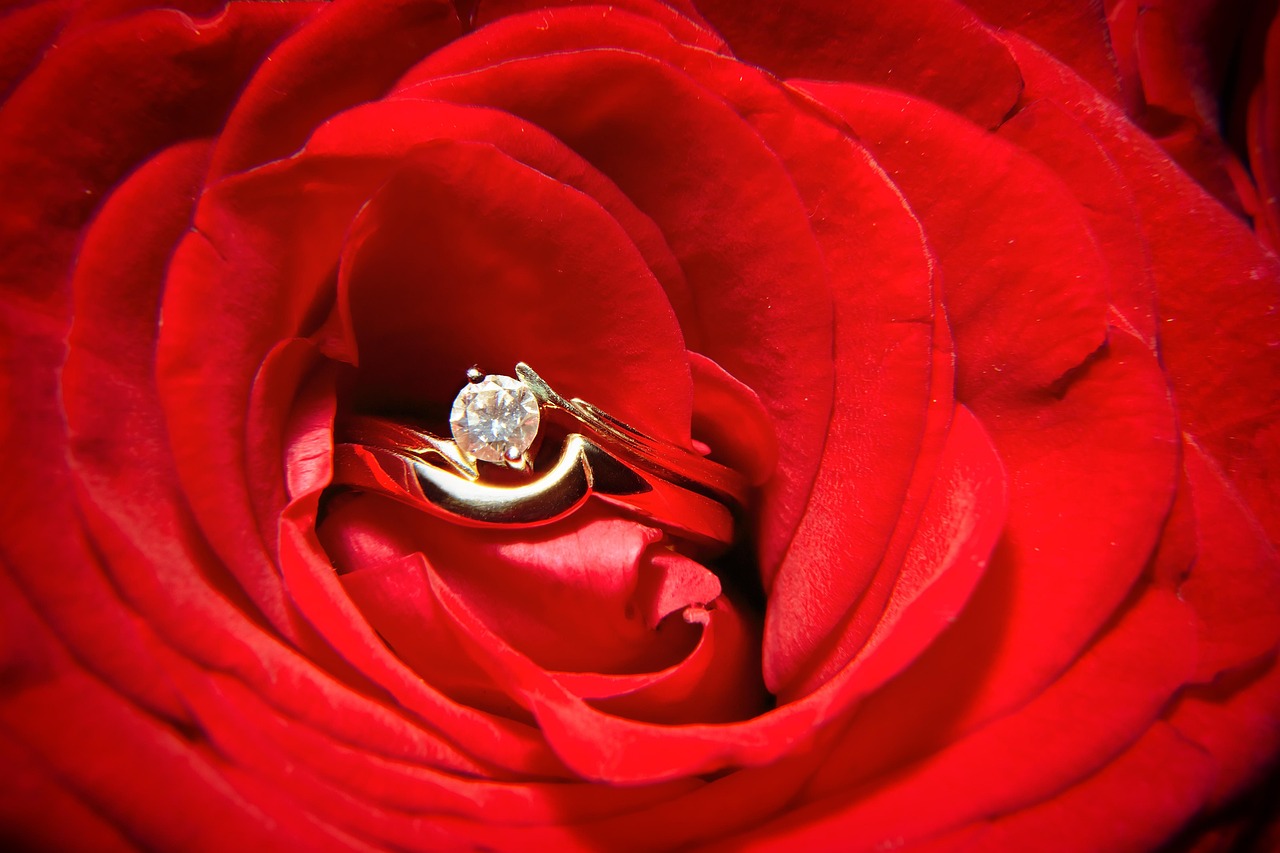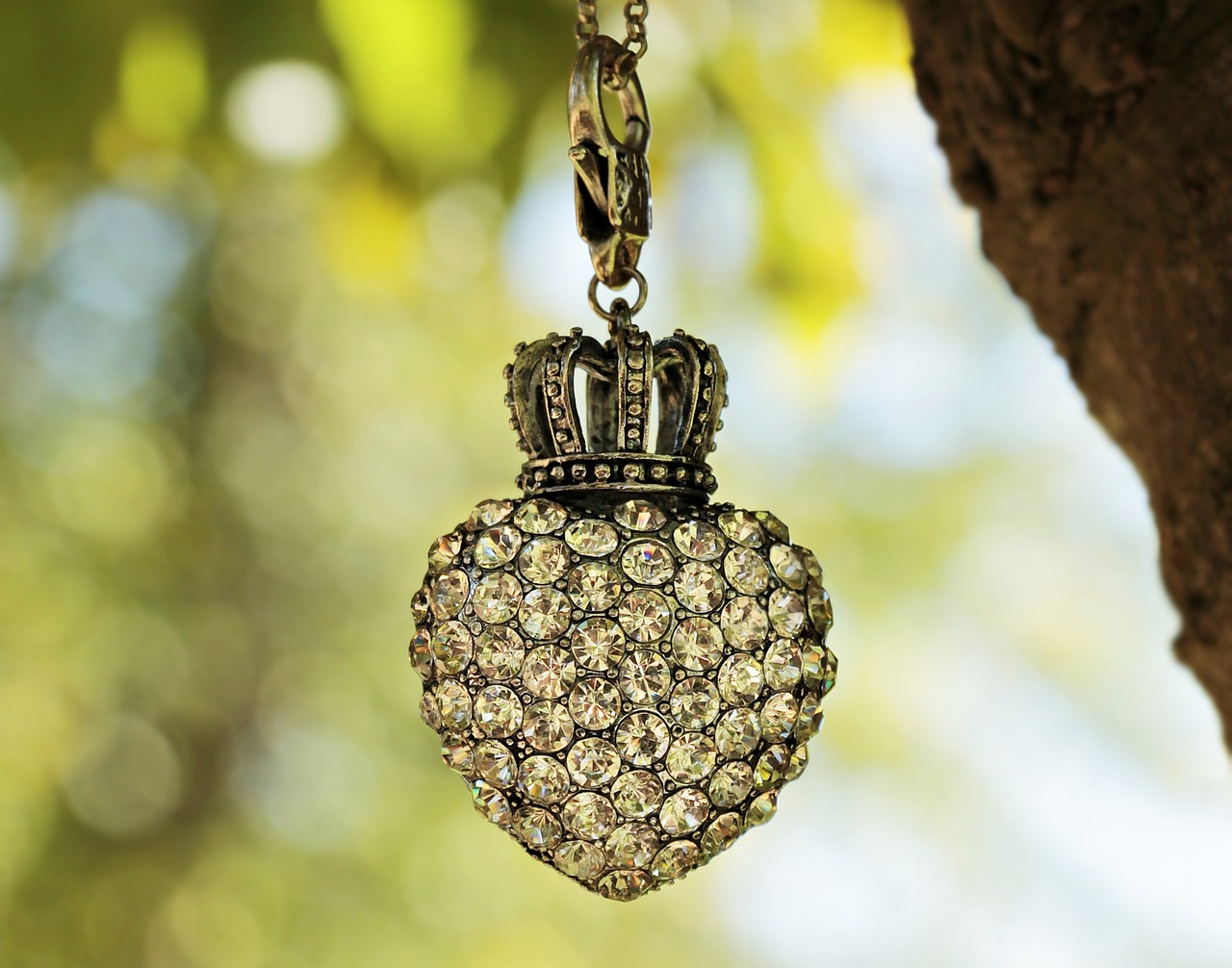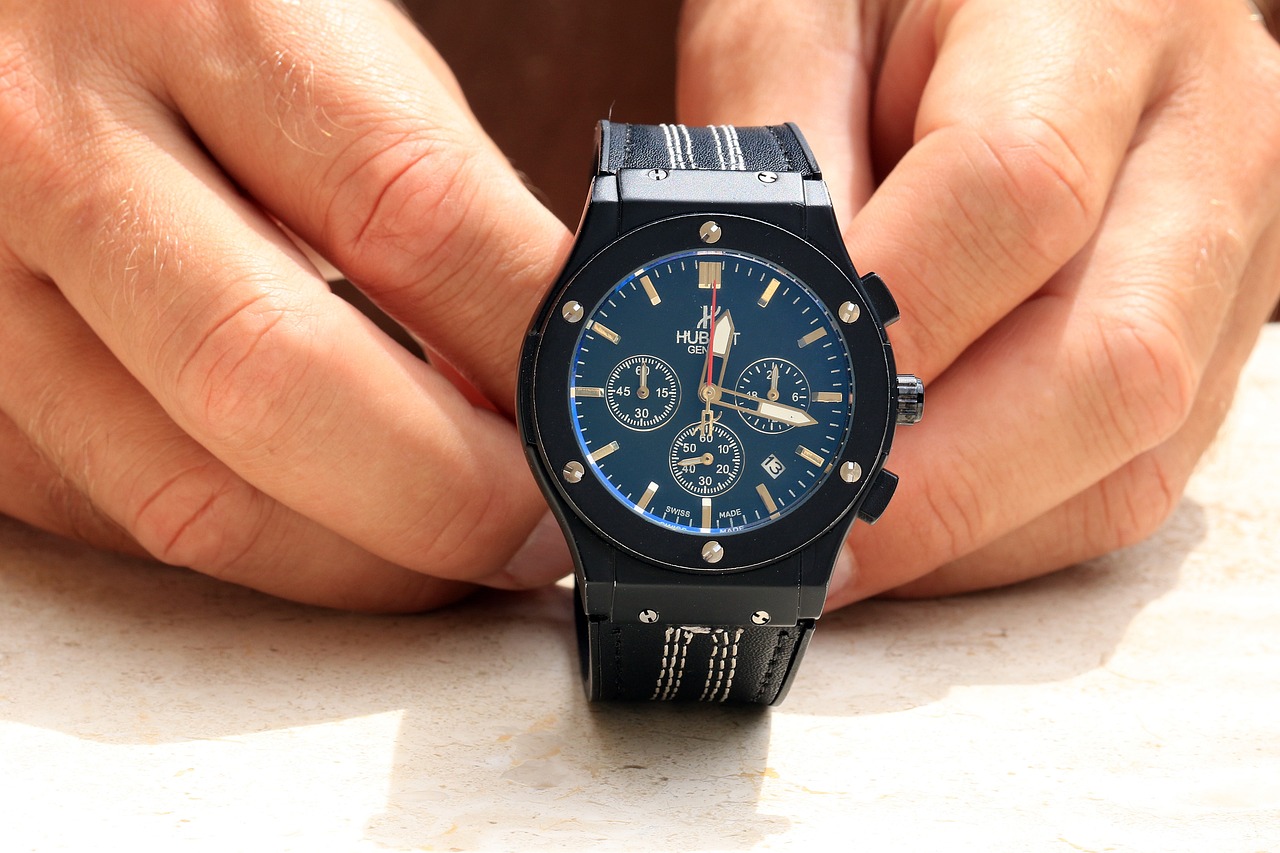This article explores ten stunning and budget-friendly alternatives to traditional diamond engagement rings, providing insights into their beauty, durability, and affordability. Discover options that suit various tastes and preferences.
Exploring the best alternatives to diamonds helps couples find beautiful options that fit their budget and style. Here, we discuss popular choices and their unique characteristics.
Moissanite is a popular diamond alternative known for its brilliance and affordability. It is nearly as hard as diamonds, making it a durable choice for everyday wear. Couples appreciate its sparkle and value, as it can be significantly less expensive than a traditional diamond.
Lab-created diamonds offer a sustainable and ethical alternative to natural diamonds. These stones are chemically identical to natural diamonds but are created in a controlled environment, which significantly reduces their environmental impact. Buyers can enjoy the same beauty and quality at a fraction of the price.
Colored gemstones are a vibrant and personal choice for engagement rings. Options like sapphires, emeralds, and rubies offer unique colors and meanings, allowing couples to express their individuality.
Vintage and antique rings offer charm and history, making them a unique choice for engagement. These rings often come with a story and can be more affordable than new rings, providing both beauty and significance.
Customizing an engagement ring allows couples to create something truly unique without breaking the bank. Consider using alternative stones or different metals to achieve a personalized look that reflects your style.
Choosing alternative stones for engagement rings comes with numerous benefits, including cost savings and ethical considerations. Alternatives such as lab-created diamonds and moissanite not only offer beauty but also peace of mind regarding their sourcing.
Understanding the ethical implications of gemstone sourcing is crucial for mindful consumers. Opting for conflict-free stones ensures that your purchase supports fair labor practices and environmental sustainability.
Evaluating the long-term value of alternative stones helps buyers understand their investment. While diamonds are traditionally seen as the best investment, many alternative stones hold their value well and can be desirable in their own right.
- Moissanite: Known for its brilliance and affordability.
- Lab-Created Diamonds: Sustainable and ethically sourced.
- Sapphires: A classic choice with a variety of colors.
- Emeralds: Symbolizing love and rebirth.
- Rubies: Representing passion and commitment.
- Topaz: A beautiful and affordable option.
- Amethyst: A stunning purple stone with unique appeal.
- Cubic Zirconia: An economical diamond simulant.
- Aquamarine: A serene blue gemstone ideal for spring weddings.
- Vintage Rings: Offering unique designs and historical significance.
By considering these alternatives, couples can find the perfect engagement ring that not only fits their budget but also aligns with their personal values and style.
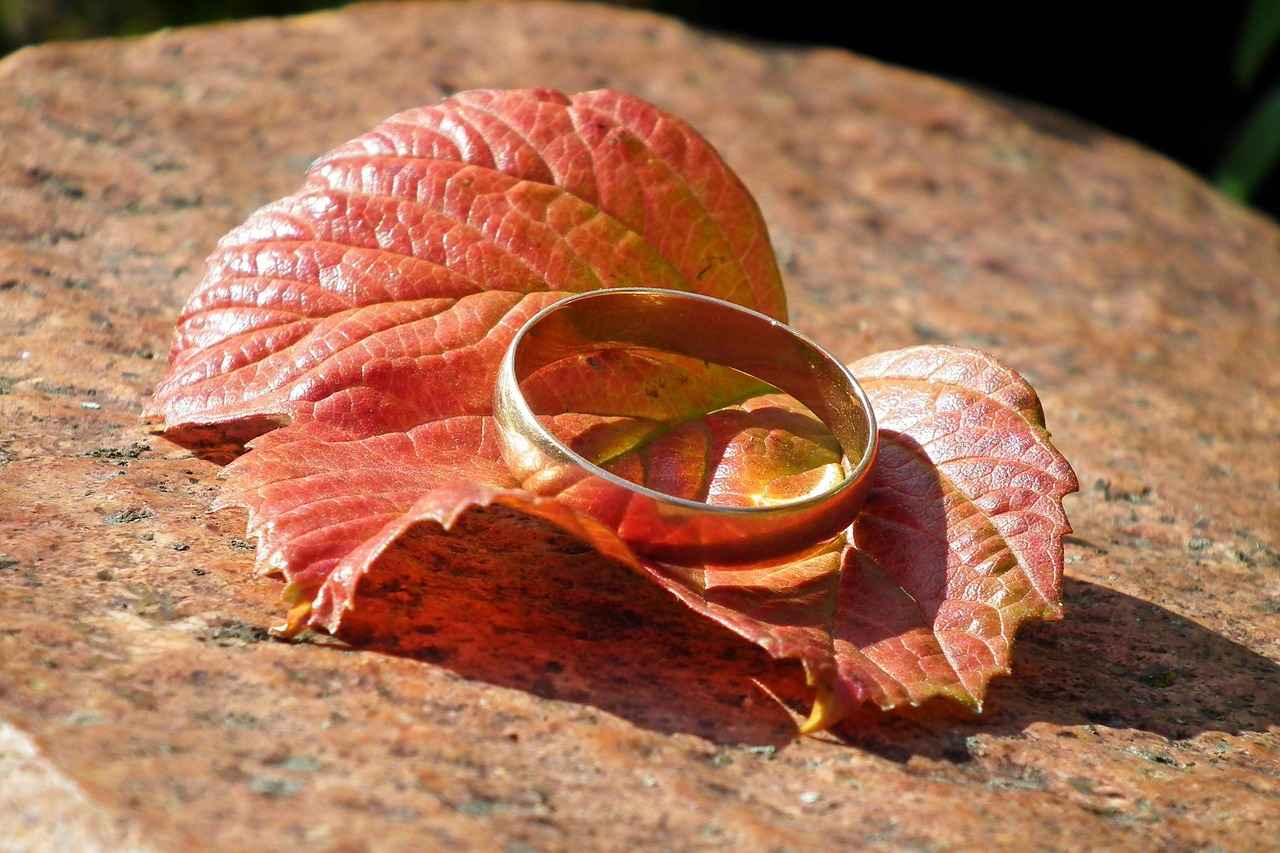
What Are the Best Alternatives to Diamonds?
When it comes to engagement rings, many couples are exploring options beyond traditional diamonds. The quest for unique, beautiful, and budget-friendly alternatives has led to a variety of stunning choices. In this section, we will delve into some of the best alternatives to diamonds, highlighting their distinctive characteristics and appeal.
Exploring the best alternatives to diamonds helps couples find beautiful options that fit their budget and style. Here are some popular choices:
- Moissanite: Renowned for its incredible sparkle, moissanite is a lab-created gemstone that closely resembles diamonds. Its brilliance is often considered superior to that of diamonds, making it a favored choice for many couples.
- Lab-Created Diamonds: These stones are chemically and physically identical to natural diamonds but are created in controlled environments. They offer an ethical and sustainable option without sacrificing quality.
- Sapphires: Available in a variety of colors, sapphires are a timeless choice. Blue sapphires are particularly popular, symbolizing loyalty and nobility.
- Emeralds: Known for their rich green hue, emeralds represent rebirth and love. They are a unique alternative that stands out in engagement rings.
- Rubies: With their vibrant red color, rubies symbolize passion and commitment. They are a bold choice for those looking to break from tradition.
- Topaz: This gemstone comes in various colors, with blue topaz being especially popular. It is known for its affordability and durability.
- Aquamarine: This light blue stone is associated with tranquility and clarity, making it a serene choice for engagement rings.
- Tourmaline: Available in a wide spectrum of colors, tourmaline allows couples to express their individuality through their ring choice.
- Opal: With its unique play of color, opal is a captivating alternative that offers a one-of-a-kind appearance.
- Vintage Rings: Choosing a vintage or antique ring not only provides a unique character but also often comes at a more affordable price compared to modern designs.
Each of these alternatives brings its own charm and significance, allowing couples to find a ring that resonates with their personal style and values. Whether you prioritize ethical sourcing, unique aesthetics, or affordability, there is an option that can meet your needs.
As you consider these alternatives, think about what each stone represents and how it aligns with your relationship. The perfect engagement ring is one that reflects your love story, making it a cherished symbol for years to come.
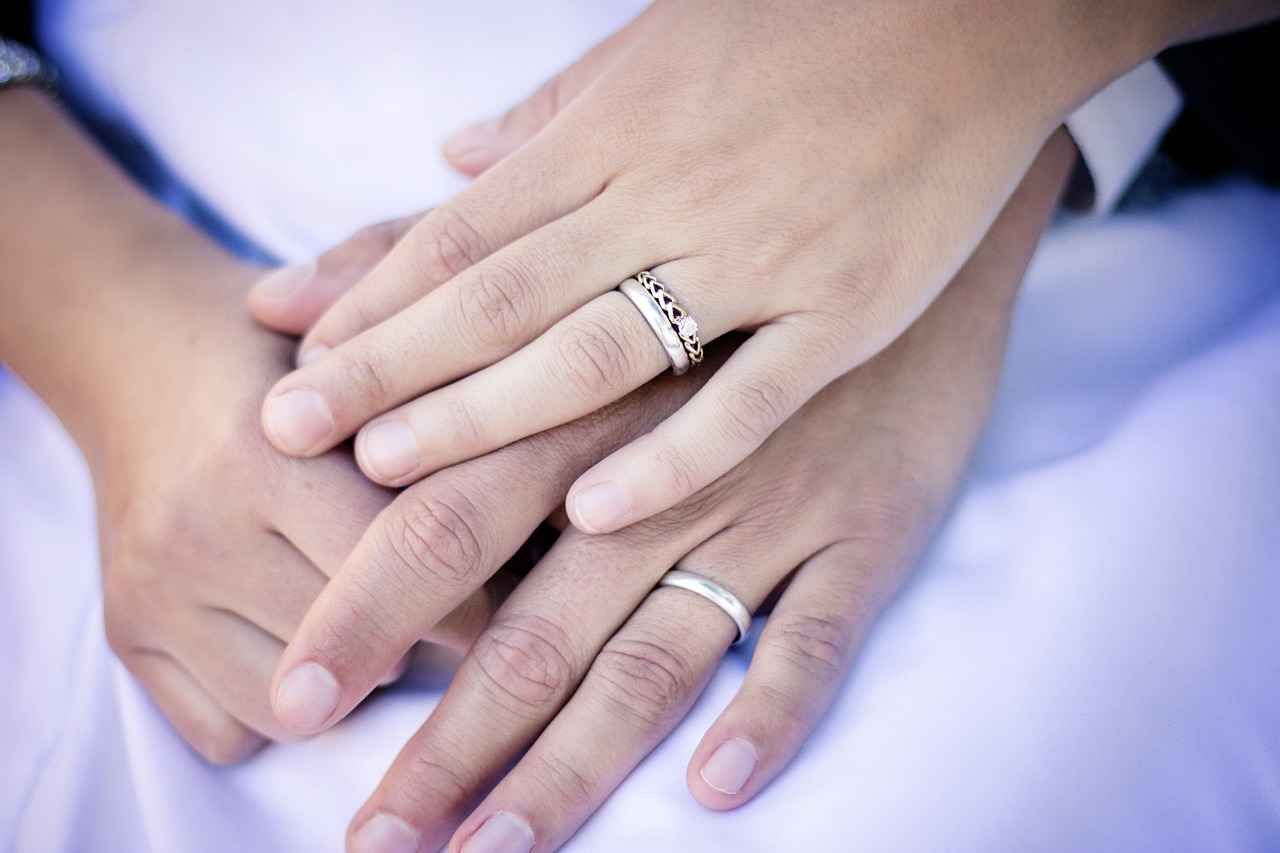
Why Choose Moissanite for Engagement Rings?
When it comes to choosing an engagement ring, couples are often faced with the dilemma of balancing beauty and affordability. One of the most compelling alternatives to traditional diamonds is moissanite. This gemstone has gained immense popularity due to its stunning appearance and cost-effectiveness. In this section, we will explore the reasons why moissanite is an excellent choice for engagement rings.
- Exceptional Brilliance: Moissanite is renowned for its incredible fire and brilliance, often surpassing that of diamonds. Its unique optical properties allow it to reflect light in a way that creates a mesmerizing sparkle.
- Affordability: One of the most significant advantages of moissanite is its affordable price. Compared to diamonds, moissanite can be significantly less expensive, allowing couples to invest in a larger stone without stretching their budgets.
- Durability: Moissanite scores a remarkable 9.25 on the Mohs scale of hardness, making it an incredibly durable option for everyday wear. This durability ensures that the ring will withstand the test of time.
- Ethical Sourcing: Moissanite is often lab-created, which means it is free from the ethical concerns associated with mined diamonds. Couples can feel good about their choice, knowing they are making a responsible decision.
Many couples are drawn to moissanite for its combination of beauty and value. The gemstone’s unique history adds to its allure; it was first discovered in 1893 by French chemist Henri Moissan in a meteorite. This cosmic origin story gives moissanite a unique charm, making it a captivating choice for an engagement ring.
When comparing moissanite to diamonds, several factors come into play:
| Feature | Moissanite | Diamond |
|---|---|---|
| Brilliance | Higher | Standard |
| Price | More affordable | Higher |
| Hardness | 9.25 | 10 |
| Ethical Concerns | Lab-created | Varies |
As illustrated in the table, moissanite often outshines diamonds in terms of brilliance while being much more affordable. This combination makes it an attractive option for those looking to maximize their investment.
Couples can customize their moissanite rings to fit their unique styles. From selecting the shape of the stone to choosing the metal for the band, there are numerous ways to create a personalized piece. Popular shapes for moissanite include round, oval, and princess cut, each offering a distinct look.
While moissanite has many advantages, it is essential to consider potential drawbacks. Some may argue that it lacks the emotional significance that diamonds hold for many. However, for couples who prioritize beauty and budget, moissanite remains a compelling choice.
Overall, moissanite stands out as an exceptional alternative to traditional diamonds, combining brilliance, affordability, and ethical sourcing. Its unique properties and customizable options make it a favorite among couples seeking the perfect engagement ring.
Moissanite: A Brief History
Moissanite has a fascinating history that captivates both gem enthusiasts and couples looking for a unique engagement ring. Discovered in 1893 by the French chemist Henri Moissan, this remarkable gemstone was initially found in a meteorite crater in Arizona. The discovery of moissanite marked a significant moment in the study of gemstones, as it revealed the existence of a diamond-like mineral that was not of earthly origin.
What sets moissanite apart is its extraordinary brilliance. While it was initially mistaken for diamond due to its similar appearance, further analysis revealed that moissanite is composed of silicon carbide. This unique composition gives moissanite its exceptional optical properties, allowing it to reflect light in a way that surpasses even the finest diamonds. In fact, moissanite has a higher refractive index than diamonds, resulting in a sparkle that many find irresistible.
For many years, natural moissanite was incredibly rare, making it difficult to source for jewelry. However, advancements in technology have made it possible to create lab-grown moissanite, which is both ethical and affordable. The ability to produce moissanite in controlled environments has made this beautiful gemstone accessible to a broader audience, allowing couples to choose a stunning engagement ring without compromising on quality or ethics.
One of the most appealing aspects of moissanite is its durability. With a hardness rating of 9.25 on the Mohs scale, it is one of the hardest gemstones available, making it suitable for everyday wear. This resilience, combined with its captivating sparkle, makes moissanite an excellent choice for engagement rings, ensuring that the ring will withstand the test of time.
Moreover, moissanite’s unique origin story adds an element of intrigue and romance. Choosing a gemstone that has traveled from the cosmos to adorn a ring symbolizes a love that is truly out of this world. Couples who opt for moissanite often appreciate its distinctive qualities and the story behind it, making it a meaningful choice for their engagement.
In summary, the history of moissanite enriches its appeal as a stunning alternative to traditional diamonds. From its cosmic origins to its lab-created counterparts, moissanite offers a unique blend of beauty, durability, and ethical considerations. As more couples seek alternatives to expensive diamond engagement rings, moissanite stands out as a brilliant choice that tells a story of love and connection.
How Does Moissanite Compare to Diamonds?
When it comes to choosing the perfect engagement ring, many couples find themselves torn between the classic allure of diamonds and the stunning alternatives available today. Moissanite, in particular, has emerged as a popular choice, thanks to its brilliance and affordability. In this section, we will delve into how moissanite compares to diamonds, focusing on aspects such as clarity, sparkle, quality, and price.
Moissanite is renowned for its exceptional clarity and fire. With a refractive index of 2.65 to 2.69, it actually outshines diamonds, which have a refractive index of 2.42. This means that moissanite exhibits a greater level of brilliance, resulting in a more dazzling appearance. Additionally, moissanite’s dispersion is higher than that of diamonds, which contributes to its colorful sparkle. This unique characteristic makes moissanite an eye-catching alternative for those who want a ring that truly stands out.
In terms of quality, both diamonds and moissanite are graded based on the Four Cs: cut, color, clarity, and carat weight. However, moissanite typically scores higher in clarity, as it is often created in a laboratory setting, which allows for fewer inclusions and blemishes compared to natural diamonds. This makes moissanite an excellent choice for couples seeking a flawless-looking stone.
One of the most significant differences between moissanite and diamonds is the price. Moissanite is generally much more affordable, often costing 10% to 15% of the price of a comparable diamond. This price difference allows couples to invest in a larger stone or choose a more intricate setting without exceeding their budget. For those who prioritize both beauty and cost-effectiveness, moissanite presents an attractive option.
When considering durability, both moissanite and diamonds are incredibly strong. Diamonds rank a perfect 10 on the Mohs scale of hardness, while moissanite follows closely behind with a rating of 9.25. This means that both stones are suitable for everyday wear, making them ideal for engagement rings that will be worn for a lifetime.
Another important factor to consider is the ethical implications of gemstone sourcing. Moissanite is created in laboratories, ensuring that it is conflict-free and environmentally friendly. In contrast, natural diamonds can sometimes be associated with unethical mining practices. For couples who are concerned about the ethical impact of their purchase, moissanite offers a responsible alternative.
Ultimately, the choice between moissanite and diamonds comes down to personal preference and values. While diamonds have long been considered the traditional choice for engagement rings, moissanite offers a modern, affordable, and ethical alternative that does not compromise on beauty or quality. By understanding the differences between these two stunning gemstones, couples can make an informed decision that reflects their unique love story.
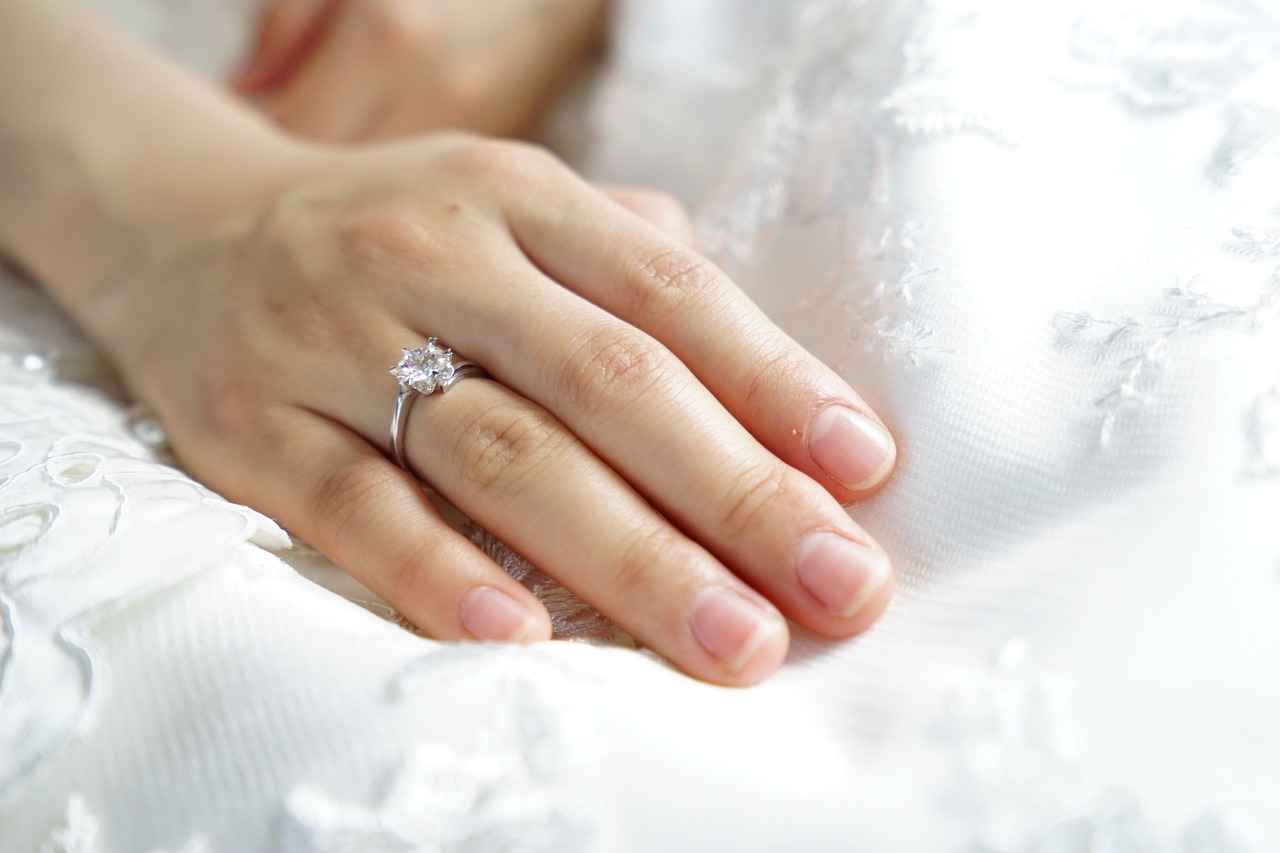
Are Lab-Created Diamonds a Worthy Option?
In recent years, lab-created diamonds have emerged as a popular choice among couples seeking engagement rings. These stunning gems offer a sustainable and ethical alternative to traditional, natural diamonds. This section explores the many benefits of choosing lab-grown stones, shedding light on their quality, affordability, and environmental impact.
What Are Lab-Created Diamonds?
Lab-created diamonds, also known as synthetic or cultured diamonds, are real diamonds that are produced in controlled environments using advanced technology. They possess the same physical, chemical, and optical properties as natural diamonds, making them indistinguishable to the naked eye. The primary difference lies in their origin: lab-created diamonds are made in laboratories, while natural diamonds are formed over millions of years beneath the Earth’s surface.
Why Choose Lab-Created Diamonds for Engagement Rings?
- Sustainability: One of the most compelling reasons to choose lab-created diamonds is their environmental impact. Traditional diamond mining can lead to significant ecological damage, including habitat destruction and soil erosion. In contrast, lab-grown diamonds require far less land and water, making them a more sustainable choice.
- Ethical Considerations: The diamond industry has faced scrutiny over ethical concerns, including conflict diamonds, which are mined in war zones and sold to finance armed conflict. Lab-created diamonds eliminate this concern, as they are produced in a controlled environment free from human rights violations.
- Cost-Effectiveness: Lab-created diamonds are generally more affordable than their natural counterparts, often costing 20-40% less. This price difference allows couples to invest in larger stones or higher quality settings without exceeding their budget.
- Quality and Variety: Lab-created diamonds come in a wide range of shapes, sizes, and qualities, allowing couples to find the perfect stone that fits their style. Additionally, advancements in technology have led to the creation of diamonds with exceptional clarity and brilliance.
How Are Lab-Created Diamonds Made?
The creation of lab-grown diamonds involves two primary methods: High Pressure High Temperature (HPHT) and Chemical Vapor Deposition (CVD). The HPHT method mimics the natural diamond formation process by applying high pressure and temperature to carbon. The CVD method, on the other hand, involves using gases to deposit carbon atoms onto a substrate, which gradually builds up a diamond crystal. Both methods result in diamonds that are chemically identical to natural diamonds.
Cost Comparison: Lab Diamonds vs. Natural Diamonds
| Feature | Lab-Created Diamonds | Natural Diamonds |
|---|---|---|
| Price | 20-40% cheaper | Higher cost due to mining |
| Environmental Impact | Minimal | Significant due to mining |
| Ethical Concerns | None | Potential for conflict diamonds |
| Quality | High quality, customizable | Varies, often lower clarity |
Are Lab-Created Diamonds Right for You?
Choosing a lab-created diamond for your engagement ring can be a fulfilling decision that aligns with both your personal values and budget. With their ethical sourcing, lower environmental impact, and affordability, lab-grown diamonds present a compelling option for couples who wish to celebrate their love without compromising on quality or conscience.
The Process of Creating Lab Diamonds
Lab-created diamonds have gained immense popularity in recent years, offering a brilliant alternative to traditional mined diamonds. Understanding the process of creating lab diamonds not only sheds light on their authenticity but also highlights their exceptional quality. This section delves into the advanced technology and methods used in the creation of these stunning gems.
Lab-created diamonds, also known as synthetic or cultured diamonds, are real diamonds that are produced in a controlled laboratory environment. Unlike natural diamonds that form over millions of years deep within the Earth, lab diamonds are created using cutting-edge technology that replicates the natural processes.
The two primary methods for creating lab diamonds are High Pressure High Temperature (HPHT) and Chemical Vapor Deposition (CVD). Both techniques result in diamonds that are chemically, physically, and optically identical to their natural counterparts.
- High Pressure High Temperature (HPHT): This method mimics the natural conditions under which diamonds form. Carbon is subjected to extreme pressure and temperature, resulting in the crystallization of diamond. The process can take a few weeks to produce a gem-quality diamond.
- Chemical Vapor Deposition (CVD): CVD involves placing a diamond seed in a chamber filled with carbon-rich gas. The gas is ionized, allowing carbon atoms to deposit onto the seed and gradually grow into a diamond. This method is often used to create larger diamonds with fewer impurities.
Lab-created diamonds offer several advantages over natural diamonds, making them a popular choice for engagement rings and other jewelry:
- Cost-Effectiveness: Lab diamonds are typically 20-40% less expensive than natural diamonds, allowing buyers to get a larger or higher-quality stone for their budget.
- Ethical Sourcing: Since lab diamonds are created in laboratories, they are free from the ethical concerns associated with mined diamonds, such as conflict diamonds.
- Sustainability: The production of lab diamonds has a significantly lower environmental impact compared to traditional diamond mining, which can cause extensive ecological damage.
Yes, lab-created diamonds are real diamonds. They share the same physical, chemical, and optical properties as natural diamonds. The only difference lies in their origin. Lab diamonds can be graded using the same criteria as natural diamonds, including the Four Cs—carat weight, cut, color, and clarity.
When comparing lab-created diamonds to natural diamonds, it’s essential to consider factors such as appearance, durability, and value retention. Lab diamonds often have fewer inclusions and can be produced in a variety of colors, making them visually stunning. However, some buyers may prefer the uniqueness and story behind a natural diamond.
In conclusion, the process of creating lab diamonds is a fascinating blend of science and artistry. With their authentic quality and ethical advantages, lab-created diamonds are becoming an increasingly popular choice for couples seeking a beautiful and sustainable option for their engagement rings.
Cost Comparison: Lab Diamonds vs. Natural Diamonds
When it comes to choosing the perfect engagement ring, one of the most significant factors to consider is the cost. In recent years, lab-created diamonds have emerged as a popular alternative to traditional, natural diamonds. This section delves into the cost comparison between these two types of diamonds, helping buyers make informed decisions based on their budget and preferences.
The price of diamonds can vary significantly based on several factors, including carat weight, cut, color, and clarity. However, the main distinction lies between lab-created and natural diamonds. On average, lab-created diamonds can be 30-50% cheaper than their natural counterparts. This price difference is largely due to the controlled manufacturing process of lab diamonds, which eliminates the costs associated with mining and transportation.
Lab-created diamonds are produced in a controlled environment, allowing for the efficient use of resources. This not only reduces the environmental impact but also lowers production costs. Additionally, the technology used to create these diamonds is continually advancing, leading to even more affordable options for consumers.
Many buyers question whether the lower price of lab-created diamonds means sacrificing quality. In fact, lab diamonds possess the same physical and chemical properties as natural diamonds. They are graded using the same criteria, ensuring that buyers receive a high-quality gemstone. Furthermore, lab-created diamonds often come with certifications from reputable gemological laboratories, providing buyers with peace of mind regarding their purchase.
To illustrate the potential savings, consider a one-carat diamond engagement ring. A natural diamond of this size may cost around $8,000, while a lab-created equivalent could be priced at approximately $4,000. This significant difference allows couples to either save money or allocate their budget towards other aspects of their wedding or future together.
While lab-created diamonds offer substantial savings, some buyers may still prefer the romantic allure of natural diamonds. Natural diamonds have unique stories and histories that lab-created stones may lack. Additionally, some individuals believe that natural diamonds hold better long-term value due to their scarcity and the perception of being a more traditional choice.
Ultimately, the choice between lab-created and natural diamonds depends on personal values and preferences. Buyers should weigh the financial benefits against the sentimental value of natural stones. By understanding the cost differences and quality of both options, couples can make a decision that best reflects their needs and desires.
In conclusion, the analysis of lab-created versus natural diamonds reveals a clear opportunity for potential savings without compromising on quality. By considering these factors, buyers can confidently navigate their options and select the perfect engagement ring that fits their budget and style.
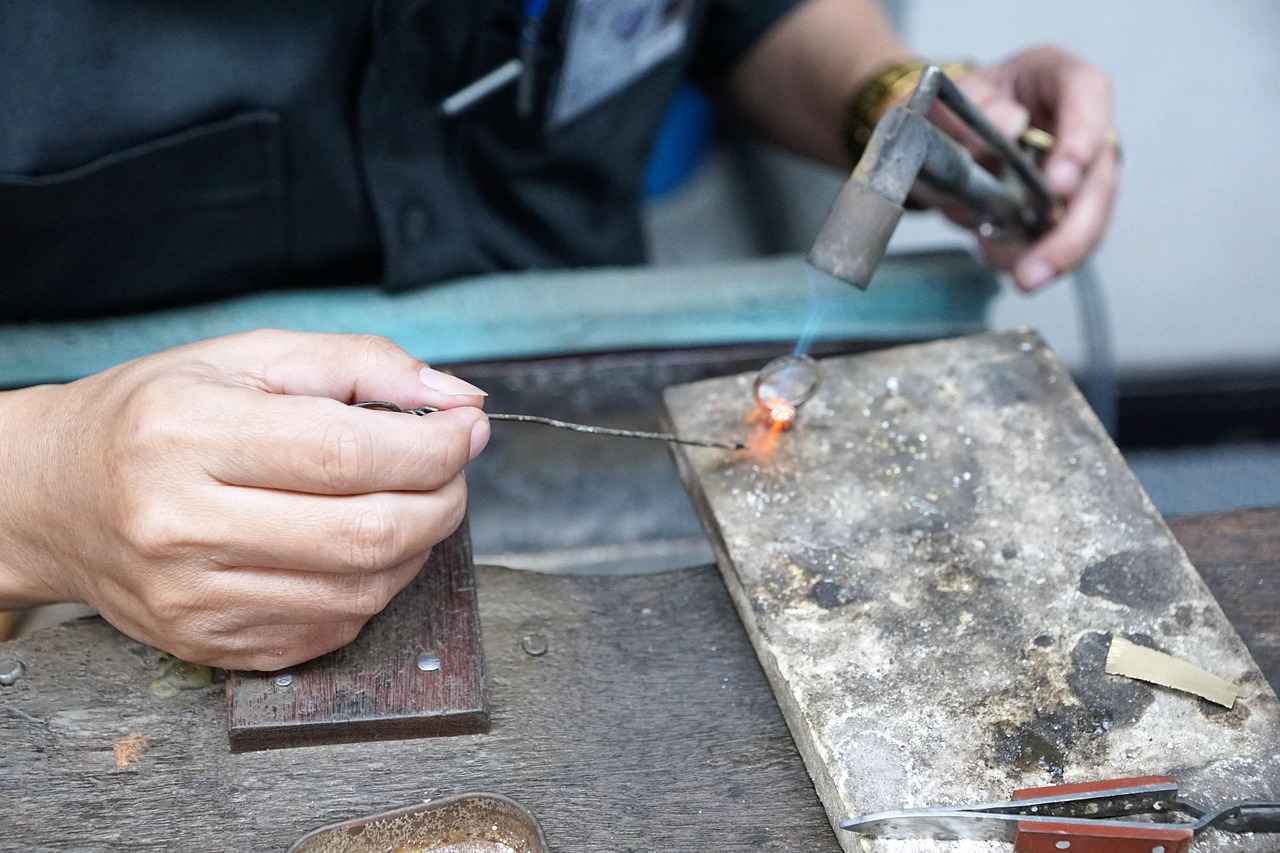
What About Colored Gemstones for Engagement Rings?
Colored gemstones are increasingly becoming a vibrant and personal choice for engagement rings. Unlike traditional diamonds, these stones offer a unique way to express individuality and style. Each gemstone carries its own significance, adding depth and meaning to the symbol of love and commitment.
Choosing colored gemstones allows couples to select a stone that resonates with their personal story. These gemstones are not only beautiful but also represent various qualities and emotions. For instance, sapphires symbolize wisdom and loyalty, while emeralds are associated with rebirth and love. This personal connection makes them a cherished choice for engagement rings.
- Sapphires: Often blue, sapphires can also be found in a rainbow of colors. They are known for their durability and symbolize fidelity.
- Emeralds: Renowned for their rich green hue, emeralds represent hope and renewal, making them a meaningful choice.
- Rubies: With their deep red color, rubies signify passion and love, perfect for those looking to express intense emotions.
- Amethysts: These purple stones symbolize peace and tranquility, appealing to those who value harmony in their relationship.
When selecting a colored gemstone for an engagement ring, consider the following factors:
- Personal Style: Choose a gemstone that reflects the wearer’s personality. For example, vibrant stones like topaz may suit a bold individual, while softer hues like aquamarine may appeal to someone with a more delicate taste.
- Durability: Not all gemstones have the same hardness. Consider stones that can withstand daily wear, such as sapphires and rubies, which rank high on the Mohs scale.
- Setting: The ring’s setting can enhance the gemstone’s beauty. Whether you prefer a classic solitaire or a more intricate design, ensure the setting complements the chosen stone.
One of the significant advantages of colored gemstones is their affordability compared to diamonds. Many couples find that they can purchase a larger or higher-quality colored gemstone for the same budget as a smaller diamond. This makes it easier to find a stunning ring without compromising on quality.
In today’s market, ethical sourcing is a crucial factor for many buyers. Many colored gemstones can be sourced responsibly, ensuring that your ring not only looks beautiful but is also ethically produced. Look for stones that are certified conflict-free or sourced from reputable suppliers.
While diamonds have traditionally held their value, colored gemstones are gaining recognition for their long-term investment potential. As the demand for unique and personalized jewelry grows, certain colored gemstones are becoming increasingly sought after. This trend can enhance their resale value over time.
In conclusion, colored gemstones offer a vibrant and personal alternative to traditional engagement rings. With a variety of choices available, couples can find the perfect stone that reflects their love and commitment while also considering factors like affordability, ethical sourcing, and long-term value.
Popular Colored Gemstones and Their Meanings
Colored gemstones have captivated hearts for centuries, not only for their beauty but also for the unique meanings and symbolism they carry. Each stone tells a story, making them popular choices for engagement rings and other meaningful jewelry. Below, we explore some of the most popular colored gemstones, their significance, and what they represent.
Sapphires are renowned for their deep blue hues, though they can be found in a variety of colors. Traditionally, sapphires symbolize wisdom, loyalty, and nobility. They are often associated with royalty and are believed to bring protection and good fortune to their wearers.
With their lush green color, emeralds are often linked to love and rebirth. These gemstones have been cherished since ancient times, believed to bring harmony and balance. In addition, emeralds are thought to enhance intuition and promote emotional healing.
Rubies are celebrated for their vibrant red tones, symbolizing passion, courage, and love. Often referred to as the “king of gemstones,” rubies are believed to ignite desire and enhance energy, making them a favored choice for romantic occasions.
Amethysts are beautiful purple gemstones that symbolize peace, calm, and spiritual growth. They are often associated with balance and clarity of mind, making them ideal for those seeking tranquility in their lives.
Topaz comes in a variety of colors, each with its own significance. The golden yellow topaz is known as a stone of strength and intelligence, believed to promote creativity and confidence. It is also thought to enhance one’s ability to manifest desires.
Opals are unique for their play-of-color, which symbolizes creativity and inspiration. These gemstones are believed to enhance imagination and bring out the best in their wearers, making them a popular choice for artists and dreamers.
Garnets are often associated with commitment and loyalty. Their rich red hues symbolize love and passion, making them a meaningful choice for engagement rings. Garnets are also believed to promote health and vitality.
Turquoise is known for its stunning blue-green color and is often seen as a stone of protection and healing. This gemstone is believed to bring good fortune and safeguard its wearer from negative energies.
Moonstone is celebrated for its ethereal glow and is associated with new beginnings and inner growth. It is believed to enhance intuition and promote emotional balance, making it a beautiful choice for those embarking on new journeys.
When selecting a colored gemstone, consider its meaning, durability, and how it resonates with personal style. Each gemstone carries its own unique energy and significance, allowing you to choose one that reflects your personality and values.
How to Choose the Right Colored Gemstone
Choosing the perfect colored gemstone for an engagement ring or other jewelry piece can be a delightful yet challenging process. With numerous options available, it’s essential to consider several factors to ensure that the chosen stone reflects both personal style and practical needs.
- Personal Style: The gemstone should resonate with your aesthetic preferences. Consider colors that you are naturally drawn to, as well as those that complement your skin tone.
- Durability: Different gemstones possess varying levels of hardness and durability. For daily wear, stones like sapphires and rubies are excellent choices due to their strength.
- Setting: The way a gemstone is set can greatly influence its appearance. Consider whether you prefer a classic solitaire or a more intricate design, as this will affect the overall look of the ring.
While diamonds are traditionally favored for engagement rings, many couples are now opting for colored gemstones. Here are some popular choices:
| Gemstone | Color | Symbolism | Durability (Mohs Scale) |
|---|---|---|---|
| Sapphire | Blue (also available in other colors) | Wisdom and nobility | 9 |
| Emerald | Green | Love and rebirth | 7.5-8 |
| Ruby | Red | Passion and courage | 9 |
| Amethyst | Purple | Calm and clarity | 7 |
When selecting a colored gemstone, it’s important to evaluate its quality based on the four Cs:
- Color: The hue, tone, and saturation of the gemstone are crucial. Look for vibrant colors with good saturation.
- Clarity: Check for inclusions or blemishes that may affect the stone’s appearance. Generally, the fewer the inclusions, the better.
- Cut: The cut influences how light interacts with the stone. A well-cut gemstone will exhibit brilliance and sparkle.
- Carat Weight: Consider how the carat weight affects the size and perceived value of the gemstone.
When purchasing a colored gemstone, consider reputable jewelers or specialized gemstone retailers. Always ask for certification to ensure the authenticity and quality of the stone. Online platforms can also offer a wide selection, but be cautious and check reviews to ensure reliability.
Colored gemstones are not only beautiful but also offer unique advantages:
- Affordability: Many colored gemstones are more budget-friendly compared to diamonds, allowing for a more extravagant choice without overspending.
- Individuality: Choosing a colored gemstone allows for a personal touch, making the piece unique to the wearer.
- Symbolism: Many colored gemstones carry specific meanings, adding sentimental value to the piece.
Ultimately, selecting the right colored gemstone involves a blend of personal preference, practical considerations, and a bit of research. By keeping these factors in mind, you can find a stunning gemstone that not only fits your style but also stands the test of time.
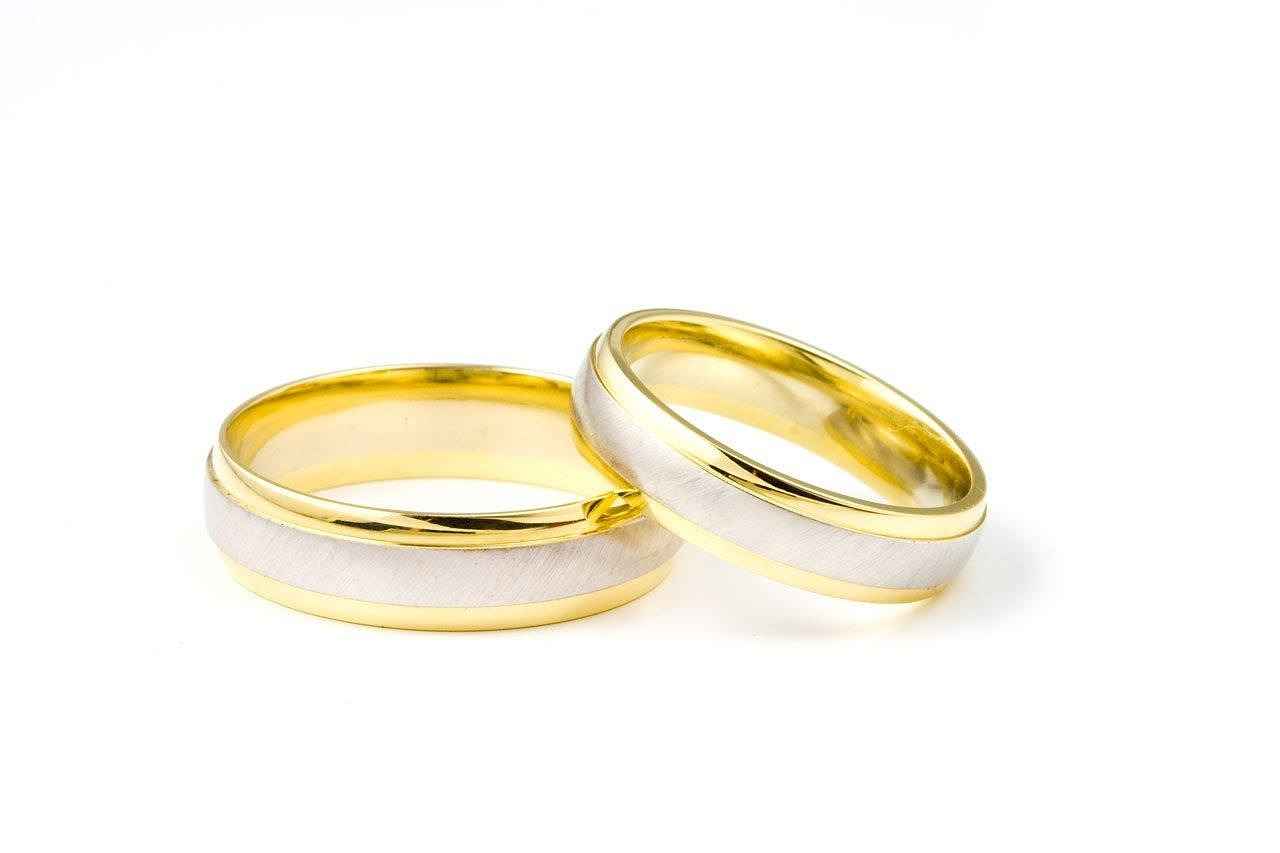
Why Consider Vintage or Antique Rings?
When it comes to choosing an engagement ring, many couples are seeking something that stands out and tells a story. Vintage and antique rings offer a unique charm and rich history that can make them a compelling choice for those looking to symbolize their love. These rings not only possess aesthetic beauty but also carry with them tales of the past, making them truly special.
The Allure of History
Each vintage or antique ring has its own story, often linked to significant historical events or personal milestones. This aspect can add a level of meaning that new rings simply cannot replicate. For couples who appreciate history, choosing a ring with a past can be a beautiful way to honor that connection. Furthermore, many vintage rings feature intricate designs and craftsmanship that are hard to find in modern jewelry.
Unique Designs
Unlike contemporary rings, which may follow current trends, vintage and antique rings come in a variety of styles that reflect different eras. From the elegant Art Deco designs of the 1920s to the ornate Victorian styles of the 1800s, these rings offer a myriad of choices that can cater to various tastes. Couples can find rings adorned with unique gemstones and settings that are not commonly available today, ensuring that their engagement ring is as distinctive as their love story.
Affordability
Many vintage and antique rings can be more affordable than their modern counterparts, especially when it comes to high-quality materials. Cost savings can be a significant factor for couples looking to stick to a budget while still wanting a stunning ring. Vintage rings often provide the opportunity to acquire a piece that has intrinsic value without the hefty price tag associated with newly mined diamonds.
Environmental Considerations
Choosing vintage or antique rings can also be an environmentally friendly option. By opting for pre-owned jewelry, couples can reduce the demand for newly mined materials, which often come with significant environmental costs. This sustainable choice not only helps preserve natural resources but also promotes a cycle of reuse and recycling in the jewelry industry.
Identifying Authentic Vintage Rings
When considering a vintage or antique ring, it is essential to know how to identify authentic pieces. Look for marks and stamps that indicate the ring’s origin and age. Consulting with a reputable jeweler or appraiser can provide valuable insights into the authenticity and value of the ring.
Emotional Value
Beyond the physical attributes, vintage rings often carry emotional weight. They can represent a connection to the past, whether it be a family heirloom or a ring that has been passed down through generations. This emotional resonance can enhance the significance of the engagement, making it a cherished symbol of love and commitment.
Conclusion
In summary, vintage and antique rings offer a wealth of benefits that make them a compelling choice for engagement. Their unique designs, rich histories, affordability, and environmental advantages provide couples with an opportunity to select a ring that resonates with their values and aesthetics. By choosing a ring with a story, couples can embark on their journey together with a piece that is not only beautiful but also meaningful.
Identifying Authentic Vintage Rings
is a crucial skill for buyers looking to invest in unique pieces that carry history and charm. With the rising popularity of vintage jewelry, understanding how to distinguish genuine items from replicas has never been more important. Below are essential tips and insights to help you confidently navigate the vintage ring market.
Before diving into identification techniques, it’s important to understand what qualifies a ring as vintage. Typically, a ring is considered vintage if it is at least 20 years old but less than 100 years old. Antique rings are those that are over 100 years old. Knowing this distinction can help you set expectations when shopping.
One of the most significant indicators of authenticity is the craftsmanship. Vintage rings often exhibit unique design elements and intricate details that are hard to replicate. Look for:
- Hand-engraved details: Vintage rings often feature hand-carved designs, which may show slight imperfections.
- Unusual settings: Vintage styles may include unique settings that are not commonly found in modern rings.
- Quality of materials: Genuine vintage rings are typically made from precious metals like gold or platinum, unlike many modern replicas which may use cheaper materials.
Another way to verify a vintage ring’s authenticity is by checking for hallmarks or stamps. These markings can provide valuable information about the ring’s maker, the metal used, and its age. Look for:
- Gold and platinum stamps: Authentic pieces will often have stamps indicating their purity, such as 10K, 14K, 18K, or PLAT for platinum.
- Designer marks: Many vintage rings will bear the signature of the designer or manufacturer, which can help confirm authenticity.
Familiarizing yourself with the market value of vintage rings can also help you identify authentic pieces. If a deal seems too good to be true, it probably is. Research similar rings in terms of design, materials, and age to get a better understanding of what constitutes a fair price.
If you’re uncertain about a ring’s authenticity, consulting with a gemologist or a reputable jeweler can provide peace of mind. Experts can examine the ring under magnification and offer insights into its age, materials, and overall quality.
As vintage rings gain popularity, many replicas flood the market. It’s essential to be aware of common types of replicas, such as:
- Modern reproductions: These are new rings made to look vintage but lack the authenticity of true vintage pieces.
- Costume jewelry: Often made from cheaper materials, these rings can mimic vintage styles but lack the quality and value.
By following these tips and being vigilant, you can successfully identify authentic vintage rings and avoid replicas. Remember, each vintage piece tells a story, and finding the right one can be a rewarding experience.
The Environmental Impact of Vintage Jewelry
Choosing vintage jewelry not only adds a unique touch to your style but also plays a significant role in promoting sustainability. This section delves into the environmental impact of vintage jewelry and highlights the numerous benefits of opting for pre-owned rings.
Vintage jewelry is often viewed as a sustainable choice for several reasons. Firstly, it reduces the demand for newly mined materials, which can be detrimental to the environment. Mining for precious metals and gemstones often leads to habitat destruction, soil erosion, and pollution. By choosing vintage pieces, you are actively participating in a movement that minimizes ecological damage.
- Resource Conservation: Vintage jewelry utilizes existing materials, conserving natural resources and reducing waste.
- Lower Carbon Footprint: The production and transportation of new jewelry contribute significantly to carbon emissions. Vintage pieces have already undergone these processes, making them a greener option.
- Unique Aesthetic: Vintage rings often feature distinctive designs that are hard to find in modern pieces, allowing you to express your individuality.
- Historical Significance: Each vintage piece carries its own story and history, adding sentimental value that new rings may lack.
In a world increasingly focused on waste reduction, vintage jewelry plays a crucial role. By purchasing pre-owned rings, you are not only saving a piece from potential disposal but also promoting a culture of reuse and recycling. This practice helps to combat the throwaway culture prevalent in today’s society.
Investing in vintage jewelry can be a wise financial decision. Many vintage pieces appreciate in value over time, making them not just beautiful adornments but also potential financial assets. The rarity and historical significance of certain designs can lead to increased demand, further enhancing their value.
When selecting vintage jewelry, it’s essential to know what to look for to ensure authenticity. Here are some tips:
- Research the Era: Familiarize yourself with the specific styles and characteristics of different jewelry periods.
- Check for Hallmarks: Authentic vintage pieces often have hallmarks or stamps indicating their origin and metal content.
- Seek Expert Advice: If in doubt, consult with a jewelry expert or appraiser who specializes in vintage pieces.
Choosing vintage jewelry is not just about sustainability; it’s also about embracing a unique aesthetic that tells a story. Each piece reflects the era it comes from, offering a glimpse into the past while allowing the wearer to stand out in the present. The charm and character of vintage rings often surpass those of newly manufactured items.
In conclusion, opting for vintage jewelry is a decision that benefits both the environment and the wearer. By choosing pre-owned rings, you contribute to sustainability efforts while enjoying the beauty and history that each piece offers. Whether you are looking for a unique engagement ring or a statement piece, vintage jewelry is a choice that resonates with both style and conscience.
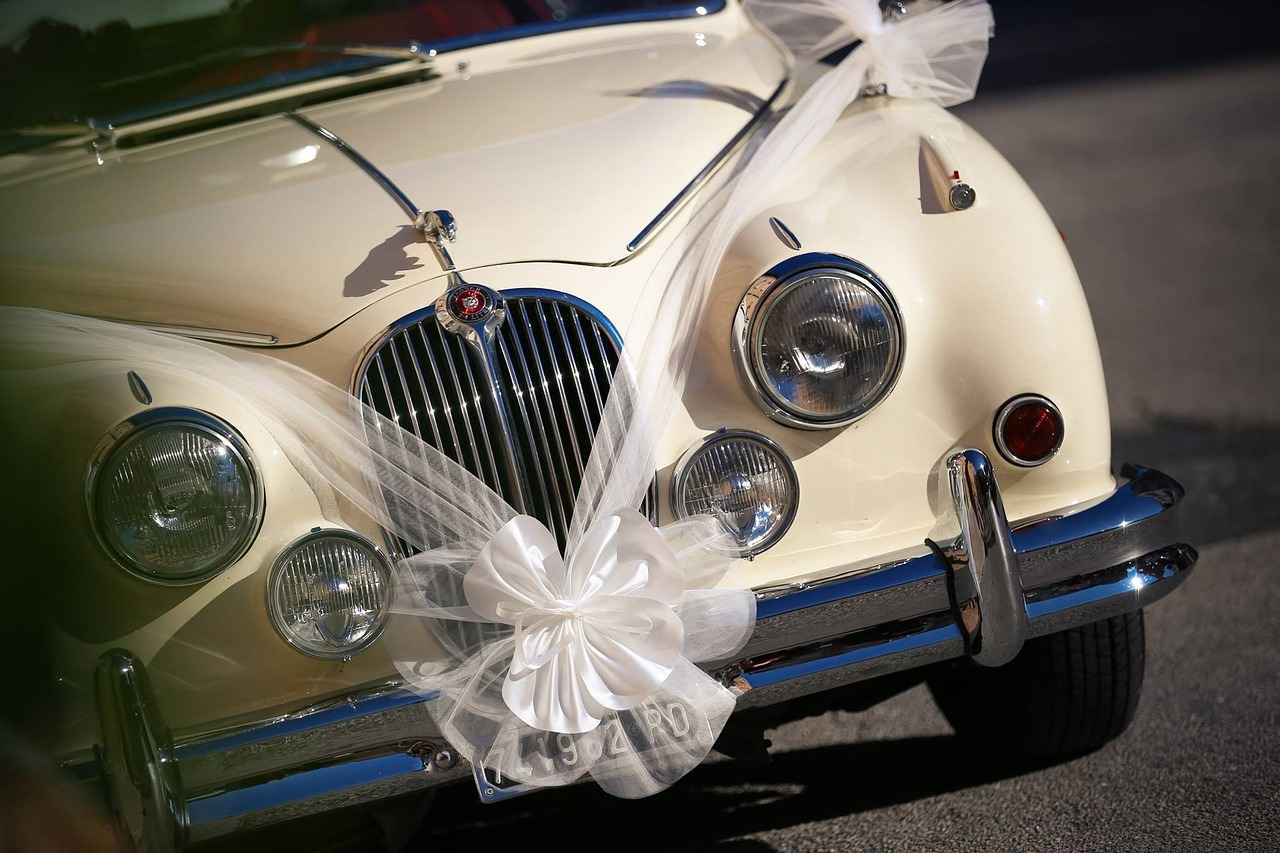
How to Customize Your Engagement Ring on a Budget?
Customizing an engagement ring can be a thrilling experience, allowing couples to create something truly unique that reflects their love story. Fortunately, it is entirely possible to design a stunning ring without exceeding your budget. Here are some practical tips to help you navigate the customization process effectively.
Before diving into the design process, it’s essential to establish a clear budget. Determine how much you can comfortably spend, keeping in mind that customization can sometimes lead to unexpected costs. A well-defined budget will help you make informed decisions throughout the process.
The choice of metal significantly impacts the ring’s appearance and cost. Here are some affordable options:
- Silver: A budget-friendly choice, silver offers a beautiful shine, though it may require more maintenance.
- Gold: Available in various colors (yellow, white, and rose), gold can provide a classic look. Opting for 10K or 14K gold can save you money.
- Platinum: While more expensive, it is durable and hypoallergenic. Consider using it selectively in your design.
Adding personal touches to your ring can make it even more special. Consider these ideas:
- Engravings: A meaningful date, initials, or a short phrase can add a sentimental touch.
- Unique Shapes: Explore non-traditional shapes for the setting or band to reflect your personal style.
- Accent Stones: Incorporate birthstones or other meaningful gemstones to add color and significance.
While diamonds are traditional, there are many beautiful alternatives that can be more budget-friendly:
- Moissanite: Known for its brilliance, moissanite is a stunning alternative that is often more affordable than diamonds.
- Colored Gemstones: Sapphires, emeralds, and rubies offer vibrant colors and can represent personal significance.
- Lab-Created Stones: These are ethically sourced and can be a more affordable option compared to natural stones.
Finding a reputable jeweler who specializes in custom designs is crucial. Here are some tips:
- Research: Look for reviews and testimonials to find a jeweler with a good reputation.
- Discuss Your Vision: Clearly communicate your ideas and budget to ensure they can deliver what you envision.
- Request Sketches: Ask for preliminary sketches or CAD designs to visualize the final product before committing.
While customizing your ring is about personal expression, it’s also wise to consider its resale value. Choose quality materials and stones that hold their value over time. This foresight can be beneficial should you ever decide to upgrade or sell.
Customizing your engagement ring on a budget is not only feasible but can also result in a stunning piece that embodies your unique love story. By carefully considering your options and incorporating personal touches, you can create a ring that is both affordable and meaningful.
Choosing the Right Metal for Your Custom Ring
When it comes to designing a custom engagement ring, one of the most critical decisions you’ll make is choosing the right metal. The metal you select can dramatically influence not only the ring’s overall appearance but also its durability and cost. Below, we explore various metal options, their characteristics, and how they can enhance your unique design.
The choice of metal plays a pivotal role in determining the ring’s style and longevity. Different metals come with varying levels of strength, weight, and color, which can affect how the ring complements the chosen gemstone. By understanding these differences, you can make an informed decision that aligns with both your aesthetic preferences and budget.
- Gold: Available in yellow, white, and rose varieties, gold is a classic choice. Its warmth and versatility make it suitable for various styles. Yellow gold is traditional, while white gold offers a modern touch.
- Silver: Known for its affordability, silver is a popular option for budget-conscious couples. However, it requires more maintenance due to its tendency to tarnish.
- Platinum: Renowned for its durability and luxurious appeal, platinum is a premium choice. It is hypoallergenic and resistant to scratches, making it ideal for everyday wear.
- Palladium: Similar to platinum but lighter and less expensive, palladium is a great alternative for those seeking a durable yet affordable metal.
The cost of the ring can vary significantly based on the metal chosen. Gold is generally more affordable than platinum, which is often priced higher due to its rarity and weight. Silver is the most budget-friendly option but may not offer the same level of durability, especially for engagement rings meant for daily wear. Understanding these cost implications can help you stay within budget while achieving the desired look.
When selecting the metal for your custom ring, consider the following:
- Allergies: If you or your partner have metal allergies, opt for hypoallergenic metals like platinum or palladium.
- Maintenance: Some metals require more upkeep than others. For instance, silver needs regular polishing, while platinum retains its luster with minimal care.
- Style: Consider the overall aesthetic you want to achieve. The metal should harmonize with the gemstone and your personal style.
Combining different metals can create a stunning visual effect. For example, a ring featuring a white gold band with a rose gold accent can provide a modern twist on a classic design. This approach not only adds visual interest but also allows for personalization, making the ring even more special.
In conclusion, the choice of metal is a crucial aspect of designing a custom engagement ring. By exploring the various options available, considering the implications of each metal on cost and maintenance, and reflecting on personal style, you can create a ring that is both beautiful and meaningful. Remember, this ring will symbolize your love and commitment, so take the time to choose wisely.
Incorporating Personal Touches into Your Design
When it comes to creating a custom engagement ring, incorporating personal touches can transform a beautiful piece of jewelry into a cherished symbol of love and commitment. Personalization allows couples to express their unique journey together and ensures that the ring reflects their individual tastes and stories. Below are several ways to infuse meaningful elements into your engagement ring design.
- Initials or Names: Engraving initials or names inside the band can add a personal touch that makes the ring truly one-of-a-kind.
- Significant Dates: Consider engraving a special date, such as the day you met or your wedding date, as a constant reminder of your love story.
- Coordinates: Engraving the geographical coordinates of a significant location, like where you got engaged, can serve as a unique reminder of that special moment.
Choosing alternative gemstones can add a personal and colorful flair to your engagement ring. Each gemstone carries its own meaning and significance, making it a perfect way to symbolize your relationship.
- Sapphires: Known for their deep blue hue, sapphires symbolize loyalty and nobility, making them a popular choice for engagement rings.
- Emeralds: Representing rebirth and love, emeralds can add a vibrant green touch to your ring.
- Birthstones: Incorporating each partner’s birthstone can create a harmonious blend of colors and meanings, celebrating both individuals.
The design of the ring itself can also reflect personal style and meaningful elements. Here are some ideas:
- Custom Settings: Opt for a setting that reflects your style, whether it’s vintage, modern, or nature-inspired.
- Unique Shapes: Consider unconventional shapes for the stone, such as a heart or pear shape, to symbolize your love.
- Nature-Inspired Designs: Incorporating floral or leaf motifs can add a personal touch that reflects your connection to nature or a specific memory.
Don’t hesitate to mix and match different elements to create a ring that tells your story. For example, you can combine a traditional diamond with colored gemstones or incorporate meaningful engravings alongside a unique setting. The key is to ensure that every aspect of the ring resonates with both partners.
Ultimately, the goal of personalizing your engagement ring is to create a piece that is not only beautiful but also holds deep significance. By incorporating meaningful symbols, unique gemstones, and thoughtful design elements, you can craft a ring that truly represents your love story. Remember, this ring will be worn for a lifetime, so make it a reflection of your journey together.
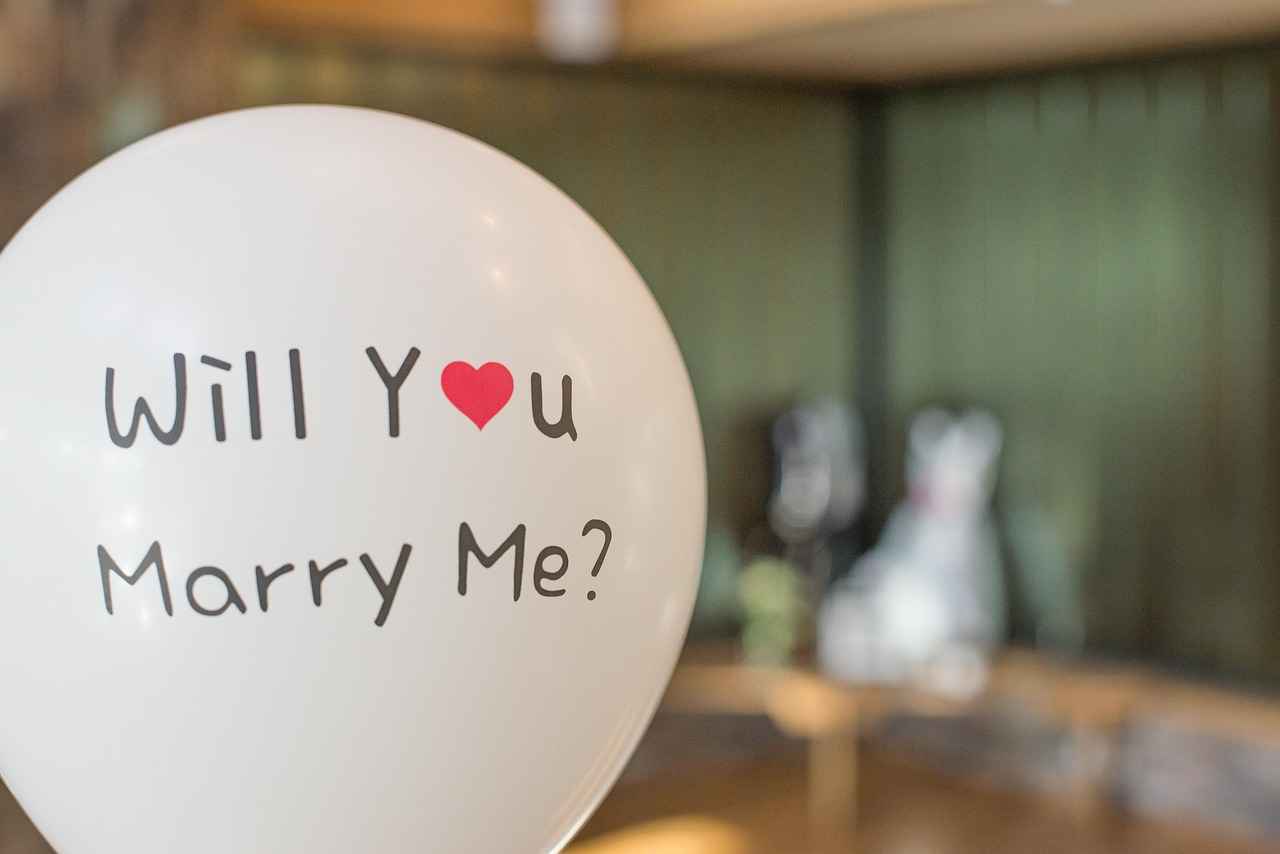
What Are the Benefits of Choosing Alternative Stones?
When it comes to selecting an engagement ring, many couples are now considering alternative stones as an option. The shift towards these alternatives is driven by various factors, including cost savings and ethical considerations. This section will explore the numerous advantages of choosing alternative stones for engagement rings, helping couples make informed decisions that align with their values and budget.
One of the most significant benefits of alternative stones is their affordability. Traditional diamonds can be prohibitively expensive, often costing thousands of dollars. In contrast, stones like moissanite, lab-created diamonds, and various colored gemstones provide stunning visual appeal at a fraction of the cost. For instance, moissanite can be up to 90% less expensive than a comparable diamond, allowing couples to allocate their budget towards other important aspects of their wedding or future together.
Another compelling reason to choose alternative stones is the ethical implications associated with their sourcing. Many natural diamonds are linked to conflict zones, where mining practices can cause environmental degradation and human rights abuses. In contrast, lab-created diamonds and responsibly sourced gemstones offer a more ethical choice, as they are produced without the negative social and environmental impacts. Choosing these alternatives allows couples to feel good about their purchase, knowing they are making a conscious decision.
Alternative stones also come in a wide variety of colors, shapes, and sizes, providing couples with unique aesthetic options that reflect their personal style. From the deep blue of sapphires to the vibrant green of emeralds, colored gemstones can be customized to match individual preferences. This diversity not only enhances the beauty of the ring but also adds a personal touch, making it a one-of-a-kind piece that tells a story.
When considering an engagement ring, durability is a crucial factor. Many alternative stones, such as moissanite and sapphires, are known for their exceptional hardness and resistance to scratches, making them suitable for everyday wear. Moissanite, for example, ranks 9.25 on the Mohs hardness scale, just below diamonds, ensuring that these stones will maintain their brilliance over time.
While diamonds have traditionally been viewed as a long-term investment, the resale value of alternative stones is becoming increasingly favorable. As consumer awareness grows regarding ethical sourcing and the beauty of alternative stones, their market demand is rising. This trend suggests that well-chosen alternative stones can hold their value and even appreciate over time, making them a smart financial choice.
Choosing alternative stones also opens the door to greater customization opportunities. Couples can design a ring that truly reflects their personality and relationship without the constraints often associated with traditional diamond rings. This freedom allows for creative designs that incorporate various stones, settings, and styles, resulting in a ring that is as unique as the love it represents.
In summary, the benefits of choosing alternative stones for engagement rings are manifold. From cost savings and ethical sourcing to diverse aesthetic options and long-term value, these alternatives offer couples a chance to celebrate their love in a meaningful and personalized way. By considering these factors, couples can find the perfect ring that aligns with their values and style.
Ethical Considerations in Gemstone Sourcing
In today’s world, where consumers are increasingly aware of the impact their purchases have on the environment and society, understanding has become essential. This awareness is particularly crucial for those looking to purchase engagement rings or other significant jewelry pieces. By prioritizing conflict-free stones, consumers can make choices that reflect their values and contribute to positive change in the industry.
Ethical gemstones are sourced in a manner that respects human rights and the environment. This means avoiding stones that are mined in war-torn regions or through exploitative labor practices. The Kimberley Process was established to prevent the trade of conflict diamonds, but the ethical concerns extend beyond just diamonds.
When consumers choose conflict-free stones, they are making a statement against the exploitation and violence often associated with gemstone mining. This choice supports fair labor practices and helps communities that rely on mining for their livelihoods. Moreover, it encourages companies to adopt ethical sourcing practices, ultimately leading to a more sustainable industry.
- Research the Source: Look for gemstones that come with certification from reputable organizations that verify ethical sourcing.
- Ask Questions: Don’t hesitate to ask jewelers about the origins of their gemstones. A reputable seller should be transparent about their sourcing practices.
- Consider Lab-Created Gems: Lab-created gemstones offer an ethical alternative, as they are produced without the environmental and social impacts associated with mining.
Choosing ethically sourced gemstones not only aligns with personal values but also contributes to broader societal benefits. Ethical sourcing can:
- Promote Sustainable Practices: It encourages companies to adopt environmentally friendly mining practices.
- Support Local Communities: Ethical sourcing often involves partnerships with local communities, ensuring they benefit from the trade.
- Enhance Consumer Awareness: As more consumers demand ethical options, it drives the industry towards greater accountability.
Despite the growing awareness and demand for ethical gemstones, challenges remain. The lack of comprehensive regulations and the complexity of supply chains can make it difficult for consumers to trace the origins of gemstones. Additionally, some companies may falsely advertise their products as ethical, making it crucial for consumers to conduct thorough research.
Certification plays a vital role in ensuring that gemstones are ethically sourced. Organizations such as the Responsible Jewellery Council and the Gemological Institute of America (GIA) provide certifications that help consumers identify responsibly sourced stones. These certifications often include detailed information about the stone’s origin, mining practices, and labor conditions.
In conclusion, understanding the ethical implications of gemstone sourcing is crucial for mindful consumers. By choosing conflict-free stones, individuals not only make a personal statement but also contribute to a more equitable and sustainable jewelry industry. As awareness continues to grow, the demand for ethical gemstones is likely to shape the future of jewelry sourcing.
Long-Term Value of Alternative Stones
When it comes to selecting an engagement ring, the long-term value of alternative stones is a crucial consideration for many buyers. Understanding how these stones hold their value over time can help couples make informed decisions about their investments. This section delves into various factors that influence the resale value and desirability of alternative stones.
Several key factors play a significant role in determining the resale value of alternative stones:
- Market Demand: The popularity of certain gemstones can fluctuate, impacting their resale value. Stones like moissanite and colored gemstones have seen a rise in demand due to their beauty and affordability.
- Quality and Characteristics: The quality of the stone, including its cut, clarity, color, and carat weight, greatly influences its value. Higher-quality stones tend to retain their value better.
- Brand and Certification: Stones that come with certification from reputable gemological laboratories are generally more desirable. Additionally, established brands may have a loyal customer base, enhancing resale potential.
- Rarity: Some alternative stones, like alexandrite or tsavorite garnet, are rarer than others. Their scarcity can contribute to a higher resale value.
Alternative stones are gaining traction among consumers for several reasons:
- Ethical Considerations: Many buyers are increasingly concerned about the ethical implications of gemstone mining. Alternative stones, especially lab-created options, provide a conflict-free choice.
- Affordability: With rising diamond prices, alternative stones offer a budget-friendly option without sacrificing beauty. Couples can often purchase larger or higher-quality stones for the same price as a smaller diamond.
- Unique Aesthetics: Each alternative stone has its own unique characteristics and colors, allowing couples to express their individuality and personal style.
The durability of a gemstone significantly affects its long-term value. For example:
- Moissanite: Known for its exceptional hardness, moissanite scores 9.25 on the Mohs scale, making it a durable choice for everyday wear.
- Sapphires: With a hardness of 9, sapphires are another robust option, ensuring they withstand the test of time.
- Emeralds: While emeralds are beautiful, their lower hardness (7.5 to 8) means they require more care, potentially affecting their resale value if not maintained properly.
As consumer preferences continue to evolve, the future of alternative stones looks promising. With increasing awareness of ethical sourcing and the desire for unique, personalized jewelry, these stones are likely to gain more traction in the market. This trend suggests that the long-term value of alternative stones may continue to rise, making them a smart investment for couples looking to celebrate their love.
Ultimately, understanding the long-term value of alternative stones empowers buyers to make decisions that align with their values and financial goals. By considering factors such as market demand, quality, and durability, couples can choose a ring that not only symbolizes their commitment but also serves as a wise investment.
Frequently Asked Questions
- What are some affordable alternatives to diamonds?
There are many stunning alternatives to diamonds that won’t break the bank! Options like moissanite, lab-created diamonds, and colored gemstones such as sapphires and emeralds offer beauty and uniqueness without the hefty price tag.
- Is moissanite a good choice for an engagement ring?
Absolutely! Moissanite is known for its incredible brilliance and durability, making it a fantastic diamond alternative. Plus, it’s more affordable, allowing couples to get a beautiful ring without overspending.
- How do lab-created diamonds compare to natural diamonds?
Lab-created diamonds are chemically identical to natural diamonds but are often more affordable. They also come with the added benefit of being ethically sourced, making them a great choice for environmentally-conscious couples.
- What makes vintage rings a unique choice?
Vintage rings carry a story and history that new rings simply can’t replicate. They often feature unique designs and craftsmanship, offering a charm that can make your engagement ring truly special.
- How can I customize an engagement ring on a budget?
Customization doesn’t have to be expensive! Start by choosing a cost-effective metal like silver or gold, and look for ways to incorporate personal touches, such as meaningful symbols or birthstones, to make the ring uniquely yours.
